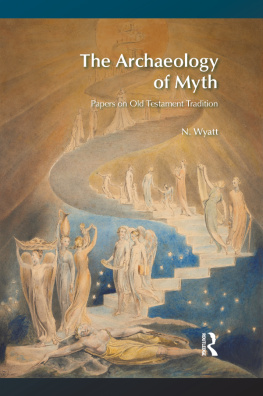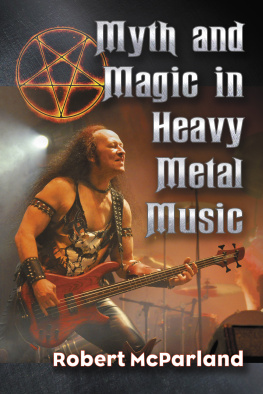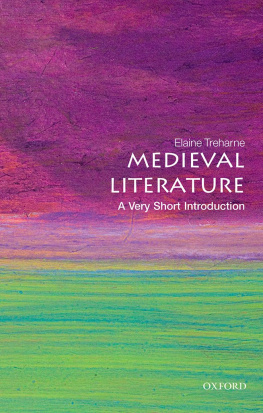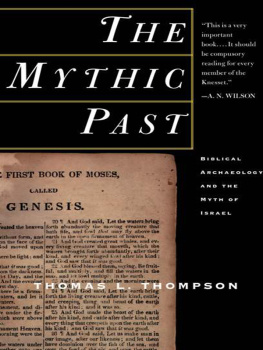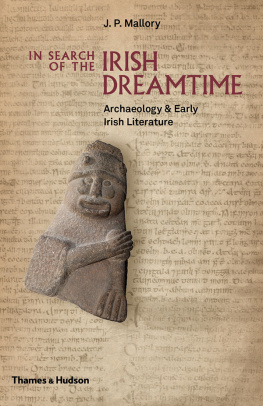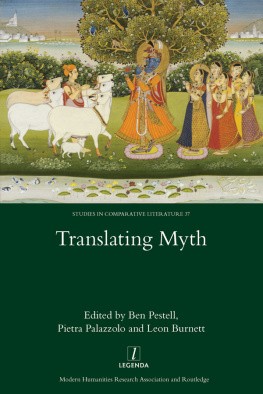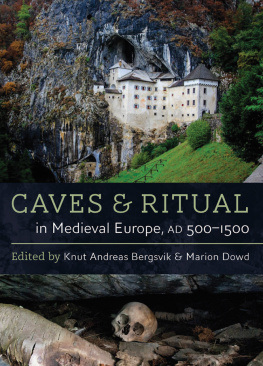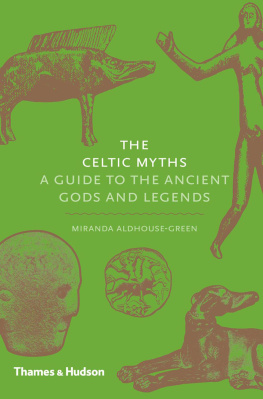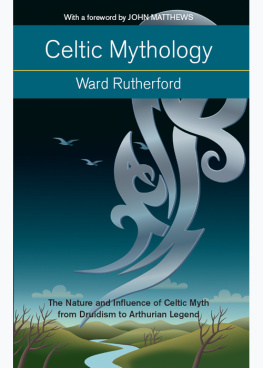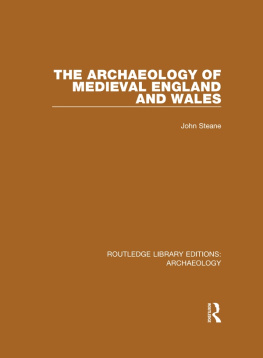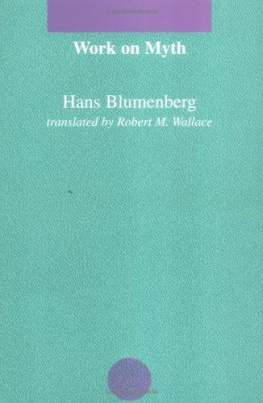O XBOW I NSIGHTS IN A RCHAEOLOGY
MYTH AND MATERIALITY
John Waddell
Published in the United Kingdom in 2018 by
OXBOW BOOKS
The Old Music Hall, 106108 Cowley Road, Oxford OX4 1JE
and in the United States by
OXBOW BOOKS
1950 Lawrence Road, Havertown, PA 19083
John Waddell 2018
Paperback Edition: ISBN 978-1-78570-975-3
Digital Edition: ISBN 978-1-78570-976-0 (epub)
Kindle Edition: ISBN 978-1-78570-977-7 (mobi)
A CIP record for this book is available from the British Library
Library of Congress Control Number: 2018935377
All rights reserved. No part of this book may be reproduced or transmitted in any form or by any means, electronic or mechanical including photocopying, recording or by any information storage and retrieval system, without permission from the publisher in writing.
For a complete list of Oxbow titles, please contact:
United Kingdom
Oxbow Books
Telephone (01865) 241249
Fax (01865) 794449
Email:
www.oxbowbooks.com
United States of America
Oxbow Books
Telephone (800) 791-9354
Fax (610) 853-9146
Email:
www.casemateacademic.com/oxbow
Oxbow Books is part of the Casemate group
Front cover: C Chulainn and the Morrgan in the form of a raven on a cattle raid. From T. W. Rolleston, Myths & Legends of the Celtic Race , 1911; illustration by J. C. Leyendecker.
Back cover: (top to bottom): The Banqueting Hall on the Hill of Tara; stone statue found at the Glauberg; the Leubingen tumulus.
in the course of human events societies pass and religious systems change; the historical landscape is littered with the husks of desiccated myths. These are valuable nonmaterial fossils of mankinds recorded history, especially if still embedded in layers of embalmed religion, as part of a stratum of tradition complete with cult, liturgy and ritual. Yet equally important is the next level of transmission, in which the sacred narrative has already been secularized, myth has been turned into saga, sacred time into heroic past, gods into heroes and mythical action into historical plot.
Jaan Puhvel, Comparative Mythology (1987)
O XBOW I NSIGHTS IN A RCHAEOLOGY
EDITORIAL BOARD
Richard Bradley Chair
Umberto Albarella
Michael J. Allen
John Baines
Ofer Bar-Yosef
Chris Gosden
Simon James
Neil Price
Anthony Snodgrass
Rick Schulting
Mark White
Alasdair Whittle
Acknowledgements
I am very grateful to all who have helped with the production of this work especially Conor Newman and Jane Conroy. I am also particularly grateful to Richard Bradley for his encouragement. Dr Elizabeth OBrien kindly provided some additional information on the Farta burial. Mirn N Dhonnchadha was, as ever, a source of sound advice. The Connacht Project in the National University of Ireland Galway under her direction was an important stimulus. This is an interdisciplinary research initiative that investigates aspects of the exceptionally rich corpus of early Irish texts relating to the ancient province of Connacht. Its archaeological component addresses the challenges posed by a number of western sites and monuments, like the royal complex of Rathcroghan, where myth, history and archaeology converge. Both Jane Conroy and Angela Gallagher deserve special thanks for their assistance with the illustrations.
The sources of the illustrations are as follows: 1.1. Author. 1.2. J. Cooke in his 1903 edition of W. F. Wakemans Hand-book of Irish Antiquities; The image of The bier of King Dathi carried in the Alps comes from John Boyle OReillys Irish Songs and Ballads (1888). 1.3. Courtesy of Conor Newman. 1.4. Macalister 1919. 1.5. Lynn 1997 ( Crown DfC); Mallory 1985. 1.6. Lynn 2002. 3.1. Courtesy of the Discovery Programme.
4.1. Eogan 2001; Fritsch 2010. 4.2. Raftery 1983; Armstrong 1933. 4.3. Parfitt 1995. 4.4. Hansen 2010. 4.5 Fritsch 2010. 4.6. After Lawson 2007. 4.7. After Scarre 2013 with emendations. 5.1. Harrison 2004. 5.2. After Stead 1991. 5.3. Shepherd and Shepherd 2001; Cahill and Sikora 2011. 5.4. Jones 1984; Ellis 1942. 5.5. Raftery 1983; Floinn 2009. 5.6. 13: Jope 2000; 4: Stead and Hughes 1997. 5.7. 12: Kaul 1998; 3: Aner and Kersten 1976. 5.8. Kristiansen 2010. 5.9. 1: Patay 1990; 23: Wirth 2006; 4: Rolley 2003.
6.1. After Wyss 1954; Brennand and Taylor 2003. 6.2. Andrn 2014. 6.3. Tonnochy and Hawkes 1931; Marco-Simn 1998. 6.4. A: Lynn 1997 ( Crown DfC); B: Mallory 1985; C: Auboyer 1959. 6.5. Powell 1971. 6.6. 1, 4: Stollner 2014; 3: Ginoux 2007; 4: Jacobsthal 1944. 7.1. Koch 2010. 7.2. 14: Duval 1987, 5: Duval 1975. 7.3. Giraud 2015. 7.4. Mniel 1992. 7.5. Stead 1991. 7.6. Collins 1952. Back cover photo: the Leubingen tumulus: author 2009.
List of Illustrations
Fig. 1.1. Rathcroghan Mound and the results of geophysical survey.
Fig. 1.2. Dathis Mound at Rathcroghan and The bier of King Dathi carried in the Alps.
Fig. 1.3. The Banqueting Hall on the Hill of Tara.
Fig. 1.4. Medieval drawing of the great Banqueting Hall on the Hill of Tara and R. A. S. Macalisters reconstruction.
Fig. 1.5. Plan of Navan Fort and an artists impression of Navan Fort today.
Fig. 1.6. Schematic plan of Navan Site AC and the sequence of circular enclosures at Site B.
Fig. 3.1. LiDAR image of the Hill of Tara.
Fig. 4.1. Bronze cardiophylax from Loughnaneane, Co. Roscommon, and a stone statue from Capestrano.
Fig. 4.2. Gold torcs from Knock and gold beads from Tumna, Co. Roscommon.
Fig. 4.3. Burial at Mill Hill, Deal, Kent.
Fig. 4.4. Reconstruction of the Hochdorf burial.
Fig. 4.5. Stone statue found at the Glauberg.
Fig. 4.6. Reconstructed plan of the Bush Barrow burial dug in 1808.
Fig. 4.7. A pattern of social stratification in prehistoric Europe.
Fig. 5.1. Engraved slab from Cabeza de Buey, Badajoz.
Fig. 5.2. Chariot grave at Kirkburn, Yorkshire.
Fig. 5.3. Inverted pottery from Findhorn, Moray, and Ballyvool, Co. Kilkenny.
Fig. 5.4. Scenes from Nordic mythology: picture-stone at Tngelgrda, Gotland, and a wooden carving from Hylestad, Norway.
Fig. 5.5. Solar imagery: the Petrie Crown and pairs of bronze discs.
Fig. 5.6. Solar imagery: the Battersea shield, the Aylesford bucket and two mirrors.
Fig. 5.7. Solar journeys: bronze razors and the Trundholm chariot of the sun.
Fig. 5.8. Upright and inverted boats in Scandinavian rock art.
Fig. 5.9. Solar images on bronzes.
Fig. 6.1. Sacred trees 2000 years apart.
Fig. 6.2. Scandinavian tree settings.
Fig. 6.3. Image of sacred trees from Rivenhall, Essex, and Arcbriga, Spain.
Fig. 6.4. The axis mundi and the solar wheel at Navan and Amaravati.


